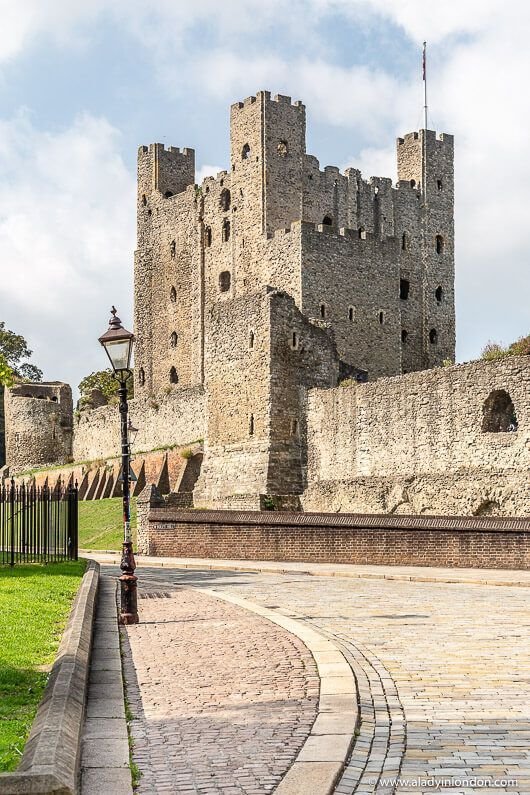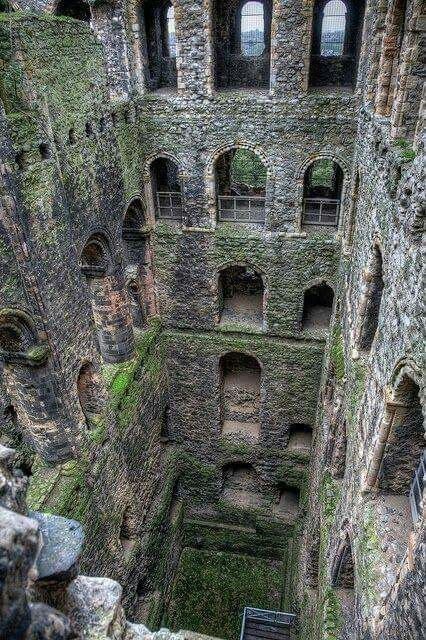Rochester Castle: The Guardian of England’s 11th Century Military Legacy

Located in the historic city of Rochester, Kent, Rochester Castle stands as a testament to the military might and architectural skill of the Normans. Built in the 11th century, this impressive structure has endured countless sieges, battles, and the shifting political dynamics of medieval England. With its towering keep and rich historical importance, Rochester Castle is celebrated as one of the best-preserved and most significant examples of Norman fortifications in the UK.

The medieval era saw a surge in castle building across Europe, and Rochester’s strategic location along the River Medway made it an ideal site for defense and control. Over the years, the castle has served not only military purposes but has also represented royal power and influence. This article delves into the origins, historical context, and lasting significance of Rochester Castle, tracing its journey from the 11th century to the present day.
Origin
The history of Rochester Castle is closely linked to the Norman Conquest of England in 1066. After winning the Battle of Hastings, William the Conqueror sought to strengthen his control over England by building strategic castles throughout the country. Rochester, positioned on the River Medway and guarding an important route to London, was chosen as a key defensive location. The castle’s construction began under Gundulf, the Bishop of Rochester, who was both a religious figure and a talented architect.
Rochester Castle was initially built as a timber fort, a typical design for early Norman castles in England. However, recognizing the need for a stronger and more defensible structure, it was later rebuilt in stone. This change reflected the evolving Norman strategy to assert their power by constructing durable stone castles that would last much longer than their wooden predecessors.

The impressive stone keep of the castle, which still dominates the surrounding area, was finished in 1127. It was designed to serve two main functions: as a defensive stronghold and as a residence for the ruling lord or noble. Standing at 113 feet tall, the keep is one of the best-preserved examples of its kind in England. Its architectural design allowed for effective defense, featuring thick walls, narrow windows, and a layout that made any attempts to breach its defenses extremely difficult.
History
Rochester Castle has played a crucial role in many important historical events, especially during the turbulent times of medieval England. One particularly significant moment in its history took place in 1215 during the First Barons’ War. This conflict arose as King John of England faced increasing opposition from his barons over issues like taxation and royal power, which ultimately led him to sign the Magna Carta. However, the strife between the monarchy and the barons continued even after this agreement, with Rochester Castle becoming a key battleground in the ongoing conflict. In October 1215, a group of rebel barons, unhappy with King John’s leadership, seized control of Rochester Castle. They strengthened their position within the castle, believing its strong defenses would serve as a secure base.

In response, King John laid siege to the castle, marking the beginning of one of the most famous and brutal sieges in English medieval history. For two months, the defenders of Rochester Castle held out against King John’s forces. The royal army employed various siege tactics, including attempts to undermine the castle’s walls. In a particularly notable incident, the attackers dug a tunnel beneath the keep and set fire to the supporting beams using fat from forty pigs, causing part of the keep to collapse. Despite this, the defenders continued to resist until they were ultimately forced to surrender due to starvation.
The siege of Rochester Castle was a significant event in the Barons’ War, showcasing the determination of the rebels and the lengths to which King John would go to maintain his power. After the siege, the castle was left in ruins but was quickly rebuilt during Henry III’s reign, who recognized its strategic importance. Over the following centuries, Rochester Castle served as a royal stronghold, military garrison, and administrative center. In the 13th and 14th centuries, the castle was the site of various political intrigues and military conflicts. During Edward III’s reign, it played a key role in England’s defense during the Hundred Years’ War against France. However, by the end of the medieval period, the castle’s military significance began to wane, leading to its slow decline into disrepair.

Famous kings
Rochester Castle is closely associated with several key figures in English history. King John, infamous for his role in the Barons’ Revolt, is perhaps the most notable, especially due to the dramatic siege that took place in 1215. After John’s death, his son, Henry III, made efforts to rebuild and strengthen the castle, recognizing its crucial role in maintaining royal power in the region. Edward I, known for his military campaigns in Wales and Scotland, also used Rochester Castle as part of his strategy to assert control over England and its territories. Similarly, Edward III utilized the castle during his military operations in France, underscoring the fortress’s lasting strategic significance throughout the 14th century. While these kings may not have spent much time in the castle, their ties to Rochester Castle underscore its importance as a royal stronghold. The castle’s presence in the area served as a constant reminder of the crown’s authority, even during times of conflict and rebellion.

Current scenario
Rochester Castle is currently managed by English Heritage. Although much of the structure is in ruins, it still showcases impressive Norman architecture and medieval fortifications. The castle’s keep, known as one of the tallest in England, dominates the landscape and offers breathtaking views of the surrounding countryside and the River Medway. Visitors can explore the castle’s remaining features, which include sturdy stone walls, turrets, and intricate medieval designs. Rochester Castle is a popular tourist destination, attracting visitors from around the world who are eager to connect with its rich history and architectural importance. The castle also hosts various cultural events, such as historical reenactments and exhibitions, that vividly bring its medieval heritage to life. Thanks to English Heritage’s dedication to maintaining and preserving the castle, it remains a proud symbol of England’s Norman legacy.

Preservation/conclusion
The preservation of Rochester Castle has been an ongoing effort for many centuries. Since the 19th century, various conservation projects have been initiated to strengthen the ruins and protect them from further deterioration. Today, English Heritage oversees the castle’s maintenance, ensuring it remains accessible to the public while preserving its historical integrity. In conclusion, Rochester Castle stands as a symbol of the strength of Norman architecture and the turbulent history of medieval England. Its grand keep, despite the effects of time and conflict, still echoes the stories of past sieges and battles. As a key part of Kent’s cultural heritage, Rochester Castle invites visitors to step back in time and explore the tales woven into its ancient stones.


